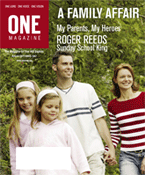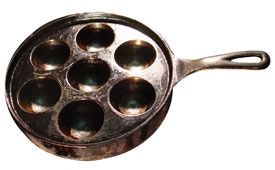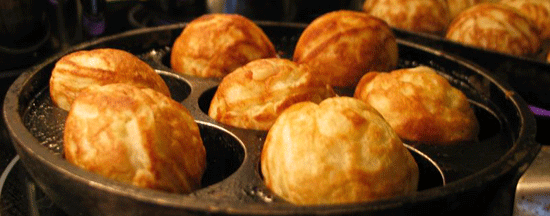
A FAMILY AFFAIR
|
 |
what is it? (part three)
LEARNING MORE ABOUT THE FREE WILL BAPTIST FOUNDATION.
Curious about the picture on the left? Scroll to the bottom of this article to learn more about ... |
WHAT DO YOU KNOW ABOUT the Free Will Baptist Foundation—the planned giving arm of the denomination? We sat down with new Director David Brown to discuss their ministry.
Q. Can the Foundation assist individuals as well as ministries?
A. Yes very much so. We can help individuals arrange a planned gift where they receive income for life and at death their favorite ministries will receive the remaining portion of the gift. We even manage a few such agreements benefiting an individual other than the donor. I call it the” have your cake and give it away too” planned gift.
Q. What kind of earnings rate can an individual receive on these arrangements?
A. The rates can be pretty high. They are based on your age. Older persons receive a higher rate because they will receive the income for a shorter period of time. Younger persons receive lower rates because they will receive income longer. These arrangements also can include two lives. The chart below illustrates the rates for both one and two life arrangements as of September 2007.
SINGLE LIFE RATE |
JOINT LIFE RATE |
Age |
Rate |
First Age |
Second Age |
Rate |
55 |
5.5% |
55 |
55 |
5.0% |
60 |
5.7% |
60 |
60 |
5.4% |
65 |
6.0% |
65 |
65 |
5.6% |
70 |
6.5% |
70 |
70 |
5.9% |
75 |
7.1% |
75 |
75 |
6.3% |
80 |
8.0% |
80 |
80 |
6.9% |
85 |
9.5% |
85 |
85 |
7.9% |
90+ |
11.3% |
90 |
90 |
9.3% |
Q. Those are phenomenal rates. How is this possible?
A. These funds are invested to benefit from both earnings and appreciation. Overall expectations are for a good return long term. However it is assumed that over the life of an individual that a portion of the principal will be returned along with the earnings. This is especially true of older individuals who are receiving the highest rates.
Q. Who determines the rates?
A. The rates are set by a national financial group that consults with experts on life expectancy and investment professionals to determine the rates. Most charitable organizations that manage these agreements generally adopt these rates to be consistent with other charities.
Q. Are the rates guaranteed?
A. Absolutely. Even if the instrument is completely exhausted we are obligated by contract to pay the earnings out of the general fund, if necessary.
Q. Have any of these agreements ever exhausted the funds?
A. No. We expect some erosion of principal, but none have or are even close to exhaustion.
Q. What are the tax advantages?
A. The tax advantages are tremendous. The donor receives a partial charitable tax deduction based on the original principal. The IRS recognizes that in this type of agreement you are receiving back a portion of your principal. Therefore only part of your income is actually taxable.
Q. Wait a minute, let me get this straight. Part of your income is tax free?
A. That is correct. This means your effective rate of return is even higher than the rates stated above. The effective rate is simply the rate of return that would be required on a fully taxable investment to equal the return on these agreements. It is the same concept as municipal bonds that pay tax free income, except in these cases the charitable agreement rates are much higher than municipal bonds, but only a portion is tax free. The chart below illustrates the effective rates on selected single life rates based on the 28% bracket as of September 2007.
SINGLE LIFE RATES |
Age |
Stated Rate |
Effective Rate |
55 |
5.5% |
7.05% |
60 |
5.7% |
7.47% |
65 |
6.0% |
8.06% |
70 |
6.5% |
8.96% |
75 |
7.1% |
10.08% |
80 |
8.0% |
11.68% |
85 |
9.5% |
14.26% |
90+ |
11.3% |
17.39% |
Q. What about using appreciated assets like stocks or real estate in these agreements?
A. They can be used to fund this investment, but capital gains cannot be avoided. However, the capital gain is spread out over the donor’s life expectancy. You pay the capital gains tax on an installment plan as you report a portion each year. If avoiding capital gains is a concern, other agreements may be more suitable.
Q. Do I have to be rich to fund one of these agreements? Are they available in smaller amounts?
A. No. You don’t have to be rich to fund this instrument. The minimum is $5,000 and there is no maximum amount.
Q. You mentioned that these gifts can benefit someone besides the donor. How does that work?
A. Sometimes people may want to provide ongoing income to a parent, sibling or friend instead of an outright gift. In that case the donor receives a partial tax deduction. All calculations are based on the age of the income beneficiary. The other individual receives the income that will be partially taxable.
Q. How long have you been managing these agreements, and how many do you currently have?
A. We are currently managing over 30 agreements and established our first one in 1985.
Q. I almost forgot. What are these investments called?
A. They are gift annuities, and they are the oldest form of a planned gift dating to 1831 when the American Bible Society issued the first one. The agency that sets the rates is the American Council on Gift Annuities.
Q. Gift Annuities sound interesting and effective. How can I get more information?
A. Visit our interactive website www.fwbgifts.org for additional information. More specific information is offered via email at foundation@nafwb.org or by calling toll free at (877) 366-7575.
 WHAT IS IT? WHAT IS IT?
Aebleskiver is a traditional Danish delicacy. The light, rounded, fruit or berry filled pancakes are usually frosted with powdered sugar and served around the holidays. According to Danish legend, the dish was invented by Viking raiders who cooked the tasty morsels over campfires in the indentations on their metal shields. As any cook might guess, the cast-iron Aebleskiver pan pictured at right works much better than a Medieval shield!
Want to make your own Aebleskiver? Find this and other recipes or order a pan on www.aebleskiver.net.

Innkeeper's Aebleskiver
Ingredients: 4.5 ounces wheat flour,
3 ounces margarine,
11 fluid ounces buttermilk,
1 egg, 1 ounce sugar,
and 1/2 teaspoon baking soda. Add lemon extract, vanilla or cinnamon according to taste.
Stir the baking soda and sugar into the buttermilk until the mixture begins to thicken. Add the egg, melted margarine, and lemon, cardamom, vanilla, or cinnamon. Using an aebleskiver pan, cook at moderate heat for 5 to 6 minutes, turning until a golden brown ball is formed.
Fill the ball with berries or jam and roll in powdered sugar. Serve hot for best taste.
|
|

